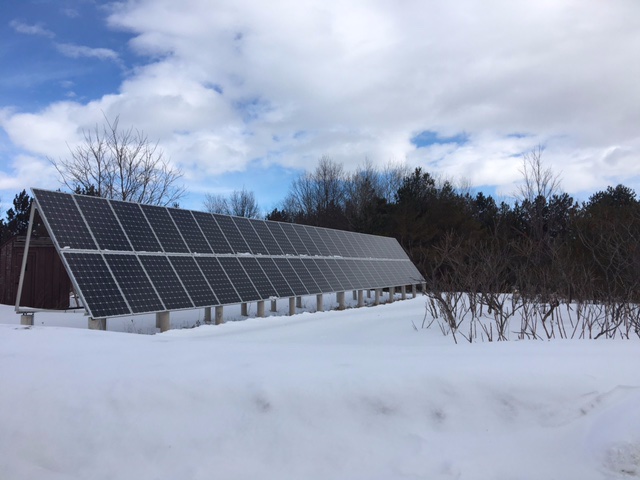According to a recent Abacus poll, a majority of Canadians think clean energy is more important
to Canada’s economy than are oil and gas. In every part of the country except the prairies, the
survey found that a majority of people think clean energy is more important than oil and gas to
their provincial economy, as well.
Says Bruce Anderson, Chairman of Abacus Data, “Canadians see the shift towards cleaner
economies as a global trend and one that is gathering momentum and creating economic
opportunity along the way.” He continues, “While there are regional and partisan differences
that are worth noting, there is probably more consensus on the direction Canada should pursue
than some might expect. The question for most people is not whether the shift to a cleaner
economy is inevitable or desirable, but how well [—and how quickly—] Canadian governments
will follow this tack and take advantage of it rather than resist it.”
There’s very little debate over whether renewable energy generation is key to a cleaner, low-
carbon future. While the City of Orillia is not currently contemplating incentives for residents to
invest in renewable energy infrastructure within the city, City officials agree that new local
renewable energy generation will likely be a key part of meeting essential reduction targets for
greenhouse gas (GHG) emissions.
Most people are familiar with large solar installations, but increasingly, smaller installations of
10 kilowatts or less are cropping up in backyards and on rooftops. These arrays are connected
and feed power to the electrical grid, thereby reducing the residents’ electricity bill accordingly.
In some cases, they actually receive a cheque for surplus power generated.
“We’re very happy with our 10KW solar system,” says Janet Machan of Oro-Medonte. “Now it’s
fully paid for, thanks to the sun it’s free energy. Some people might worry about the look of
them, but I love to see the solar panels, angled towards the western sky, passively collecting,
and to know that they are providing emissions-free energy to the grid.”
Solar systems are becoming increasingly efficient, and purchase and installation costs have
plummeted in the past ten years. Current installation costs are $3-3.50 per watt (plus Hydro
One costs and an Electrical Safety Authority (ESA) inspection https://esasafe.com) or about
$35,000 for a 10KW system.
“Our installation cost was recovered in less than 10 years,” says Jamie Ross of Oro-Medonte,
“which is easily less than half the projected lifespan of the panels. And some more good news?
Solar systems require minimal maintenance.”
“Our production is at its maximum during the days between March and October,” Jamie
continues. “The input of power into the grid from panels across Ontario during this period
almost exactly offsets the demand for power from air conditioning units, which is power that
hydro or nuclear generation doesn’t have to provide every summer,”
In addition to the federal government’s Canada Greener Homes Grant funding for
energy efficiency home upgrades such as new windows, doors, insulation, space, and water
heating equipment, the grant program also provides funding for rooftop solar panels to
homeowners of single family homes and small multi-unit residential buildings.
“If there is capacity both with Hydro One and your bank account,” advises Tony Telford,
President of Orser Technical Services, “now it is time to engage a contractor to do a layout and
cost quotation.”
Then, says Tony, the necessary steps involved in installing a solar system are to:
1. complete Hydro One”s Form “C”. https://www.services.hydroone.com/forms1/micro-
generation_connection_application_formc.aspx; This will be the go or no-go trigger. Only
Hydro One can determine whether the local electrical servicing will enable you to hook up a
solar array to their lines. “Don’t invest any money on equipment until you have a positive
response from Hydro One,” says Tony Telford.
2. engage a contractor
3. get an Electrical Safety Authority (ESA) inspection certificate and authorization to connect to
Hydro One.
Hydro One’s “net metering” program is available to any Hydro One customer who generates
electricity primarily for their own use from a renewable energy source (wind, water, solar
radiation or agricultural biomass). “Net metering allows you to send electricity generated from
renewable energy sources to Hydro One's distribution system for a credit towards your
electricity costs,” says Hydro One’s website. “Excess generation credits can be carried forward
for a consecutive 12-month period to offset future electricity costs. Net-metered customers can
now pair energy storage with renewable energy systems.”
All indicators point to renewables as the future of energy supply in our city and around the
world. Residents with a suitable sunny space – on their roof or somewhere on their property
– may be the first in their neighbourhood to “go solar,” reducing both their electricity costs
and GHG emissions.
Living in the “Sunshine City” could reduce our reliance on fossil fuels and increase the power of
sunshine in our lives.

